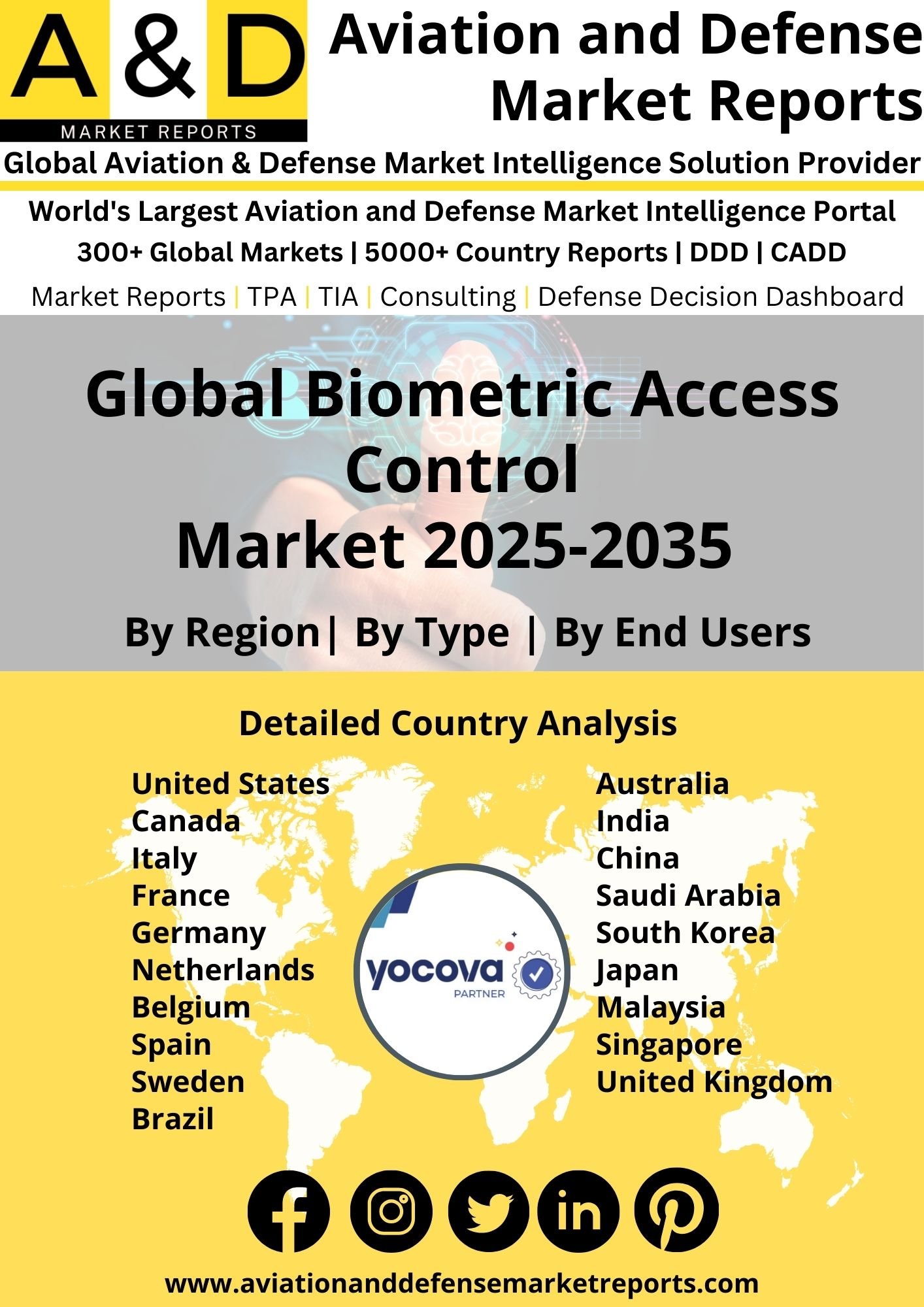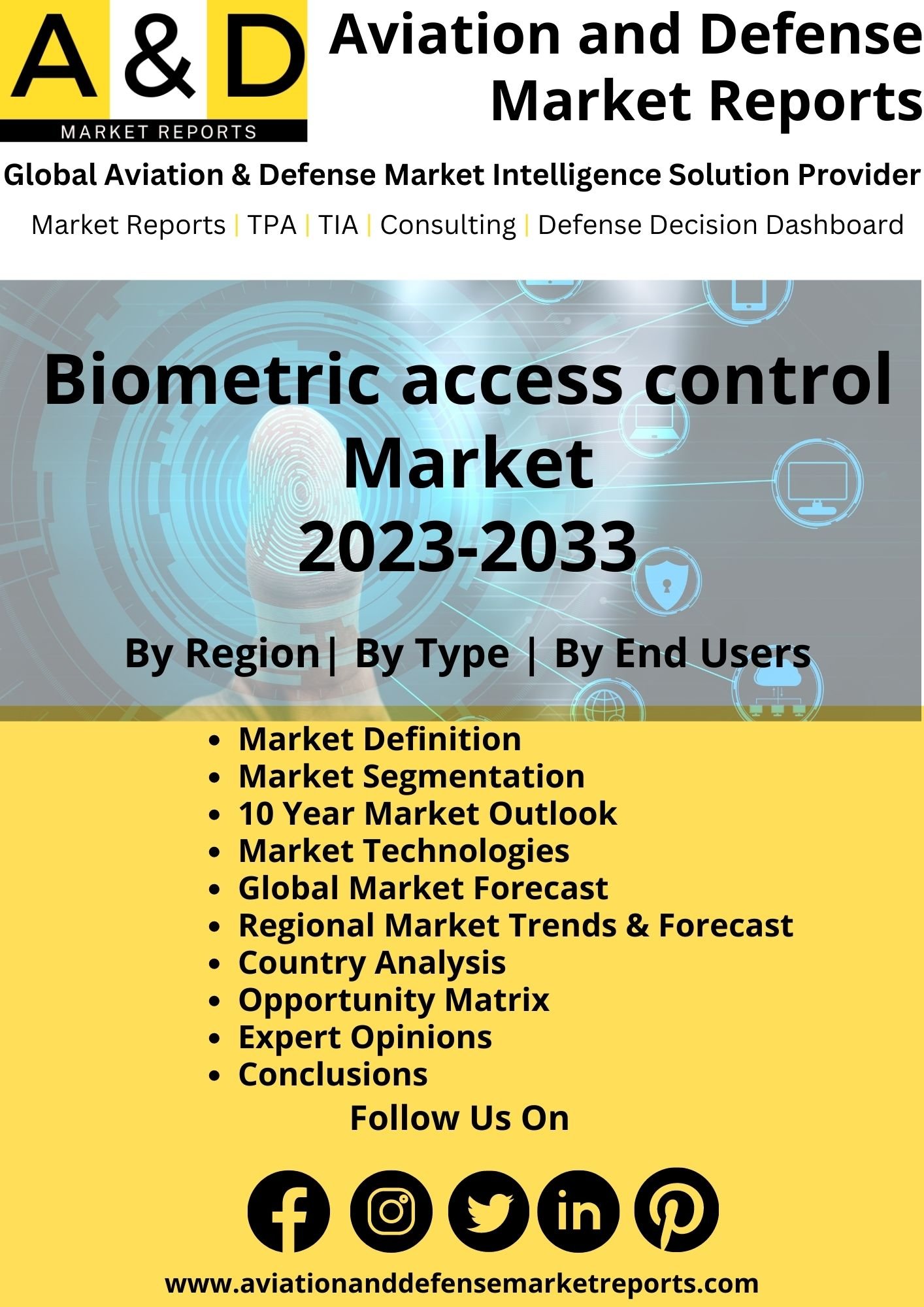Description
Biometric Access Control Market
Frequently Asked Questions of Global Biometric Access Control Market
The payload capabilities of drones, which range from a few grams to several kilos, are extremely diverse. The usage of small drones for a variety of tasks has increased during the past few years. Drones are becoming a greater threat to society, public safety, and individual privacy at the same time. Drones offer an ever-expanding spectrum of applications, from weapon carriers to spying instruments, and they allow an attacker to reach any target in any location without harming troops. To lessen and eliminate the impact of drones, counter-drone technology for detection, deterrence, and destruction of incoming drone threats must be developed and deployed.
Devices that detect and/or intercept unmanned aircraft systems while they are in flight are referred to as counter-UAS or C-UAS, also known as counter-drone (anti-drone) technology. Technology for countering defense unmanned aerial systems (UAS) is constantly evolving as drone use increases. C-UAS technology has advanced due to worries about the threat that drones pose in both military and civilian contexts.
Major factors driving Biometric Access Control Market Growth
With the rising need for secure access control in various sectors, such as government, healthcare, banking, and corporate environments, the demand for biometric access control systems has grown. Biometric traits provide a higher level of security compared to traditional access control methods, reducing the risk of unauthorized access. The COVID-19 pandemic has accelerated the demand for contactless access control solutions. Biometric modalities that do not require physical contact, such as facial recognition and iris scanning, have gained popularity as they offer hygienic and convenient access control options.
Trends Influencing the Biometric-Access Control Market Size
With the rising need for secure access control in various sectors, such as government, healthcare, banking, and corporate environments, the demand for biometric access control systems has grown. Biometric traits provide a higher level of security compared to traditional access control methods, reducing the risk of unauthorized access. The COVID-19 pandemic has accelerated the demand for contactless access control solutions. Biometric modalities that do not require physical contact, such as facial recognition and iris scanning, have gained popularity as they offer hygienic and convenient access control options.
Biometric-Access Control Market Forecast & Dynamics
A digital service for biometric access control called BER Traveller has been launched by Berlin Brandenburg Airport (BER). Passengers on Lufthansa Group airlines, including SWISS, Austrian Airlines, Brussels Airlines, and Eurowings, who are HON Circle Members and Senators are eligible to access the program. Through the use of a distinct lane and facial recognition technology, these travelers now have quick access to priority security screening. The only requirement is a single registration of their biometric information in the FastID app provided by the service provider.
Alcatraz AI, a California-based developer of solutions for biometric autonomous access management, is integrating its technology with Genetec, a Canadian company. With this new collaboration, Genetec’s “open-platform” access control system Synergis, which can communicate with an increasing number of third-party access control devices, and Alcatraz AI’s flagship authentication product, the Rock, will work together. According to a press statement from the two firms, the integration of facial biometrics would boost security while decreasing costs for organizations, streamlining processes, and generating business insights.
Biometric Access Control Market Analysis for Recent Developments
A digital service for biometric access control called BER Traveller has been launched by Berlin Brandenburg Airport (BER). Passengers on Lufthansa Group airlines, including SWISS, Austrian Airlines, Brussels Airlines, and Eurowings, who are HON Circle Members and Senators are eligible to access the program. Through the use of a distinct lane and facial recognition technology, these travelers now have quick access to priority security screening. The only requirement is a single registration of their biometric information in the FastID app provided by the service provider.
Alcatraz AI, a California-based developer of solutions for biometric autonomous access management, is integrating its technology with Genetec, a Canadian company. With this new collaboration, Genetec’s “open-platform” access control system Synergis, which can communicate with an increasing number of third-party access control devices, and Alcatraz AI’s flagship authentication product, the Rock, will work together. According to a press statement from the two firms, the integration of facial biometrics would boost security while decreasing costs for organizations, streamlining processes, and generating business insights.
The global landscape of biometric access control has witnessed substantial advancements, reshaping security measures across various sectors, particularly in airports, government facilities, and commercial spaces. Biometric access control systems utilize unique physical or behavioral characteristics, such as fingerprints, facial recognition, or iris scans, for secure and convenient identity verification. Airports and secure facilities have increasingly adopted biometric access control for streamlined and touchless entry processes. Facial recognition technology, in particular, has gained prominence, allowing for quick and accurate verification of individuals.
Advancements in biometric technology include improved accuracy, faster processing speeds, and enhanced anti-spoofing capabilities to prevent unauthorized access attempts. These innovations contribute to robust security measures and reduce the risk of identity fraud. Integration with mobile devices and cloud-based systems enables seamless and secure access across different locations, supporting flexible and adaptive security solutions. This fosters a more dynamic approach to access control in response to evolving security needs. Global standards and regulatory frameworks ensure the responsible and ethical deployment of biometric access control systems, addressing privacy concerns and promoting interoperability. The ongoing evolution of biometric access control in 2023 signifies a commitment to leveraging cutting-edge technology for secure and user-friendly access management.





